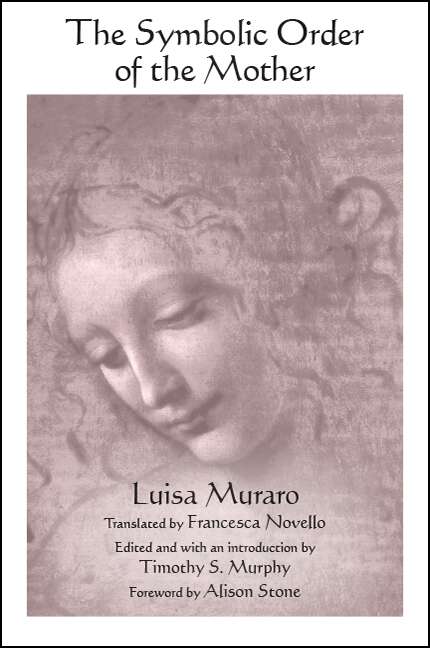The Symbolic Order of the Mother (SUNY series in Contemporary Italian Philosophy)
By:
Sign Up Now!
Already a Member? Log In
You must be logged into Bookshare to access this title.
Learn about membership options,
or view our freely available titles.
- Synopsis
- In The Symbolic Order of the Mother Luisa Muraro identifies the bond between mother and child as ontologically fundamental to the development of culture and politics, and therefore as key to achieving truly emancipatory political change. Both corporeal development and language acquisition, which are the sources of all thinking, begin in this relationship. However, Western civilization has been defined by men, and Muraro recalls the admiration and envy she felt for the great philosophers as she strove to become one herself, as well as the desire for independence that opposed her to her mother. This conflict between philosophy and culture on the one hand and the relationship with the mother on the other constitutes the root of patriarchy's symbolic disorder, which blocks women's (and men's) access to genuine freedom. Muraro appeals to the feminist practice of gratitude to the mother and the recognition of her authority as a model of unconditional nurture and support that must be restored. This, she argues, is the symbolic order of the mother that must overcome the disorder of patriarchy. The mediating power of the mother tongue constitutes a symbolic order that comes before all others, for both women and men.
- Copyright:
- 2019
Book Details
- Book Quality:
- Publisher Quality
- Book Size:
- 162 Pages
- ISBN-13:
- 9781438467658
- Related ISBNs:
- 9781438467641, 9781438467634
- Publisher:
- State University of New York Press
- Date of Addition:
- 08/07/23
- Copyrighted By:
- State University of New York
- Adult content:
- No
- Language:
- English
- Has Image Descriptions:
- No
- Categories:
- Nonfiction, Philosophy
- Submitted By:
- Bookshare Staff
- Usage Restrictions:
- This is a copyrighted book.
- Edited by:
- Timothy S. Murphy
- Foreword by:
- Alison Stone
- Introduction by:
- Timothy S. Murphy
- Translator:
- Francesca Novello
